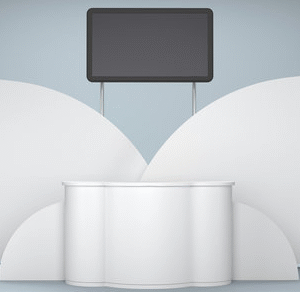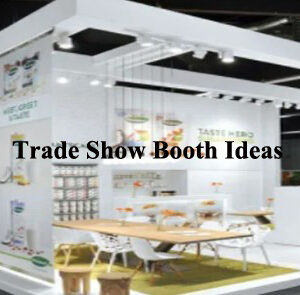Trade shows provide an incredible opportunity to showcase your business, build brand awareness, and connect with potential customers and partners. Whether you are a seasoned exhibitor or a first-timer, the design and functionality of your trade show booth can play a major role in how effectively you communicate your message and attract the right audience. Selecting the right booth for your business requires careful planning, a clear understanding of your goals, and a consideration of your brand’s image.
This article will guide you through the process of choosing the right trade show booth for your business. We will cover essential factors such as booth size, layout, materials, design elements, and cost considerations to help you make an informed decision.
1. Define Your Goals and Objectives
Before diving into the selection process, it’s crucial to define what you hope to achieve at the trade show. Setting clear objectives will help you make decisions about the type of booth you need and the features it should include. Common trade show objectives include:
Brand Awareness: If your goal is to get more exposure for your brand, you’ll want a booth that highlights your logo, tagline, and key messaging in a highly visible way.
Lead Generation: If your aim is to generate qualified leads, you’ll need a booth that allows for interactive demos, product displays, and easy sign-up forms.
Networking: For businesses looking to establish partnerships or connect with suppliers, a booth that offers enough space for discussions and private meetings is essential.
Sales: If your objective is to make sales directly at the trade show, ensure your booth has a clear and compelling call to action (CTA), product displays, and perhaps even a point-of-sale system.
Your goals will influence not just the size and layout of the booth, but also its design elements, technology integration, and overall functionality.
2. Understand Your Budget
Your budget will play a significant role in determining the type of booth you can afford. Booth costs can vary widely, depending on the size, complexity, and materials used. Here’s a breakdown of typical costs:
Standard Booths: These usually consist of simple structures that include display panels, shelving, and branding. They are the most cost-effective option.
Custom Booths: Custom-built booths offer more flexibility and creativity, often resulting in a unique design that sets you apart from competitors. However, they tend to be more expensive due to the labor and materials involved.
Modular Booths: These are a good middle ground, offering customization without the full price tag of a custom booth. Modular booths allow you to mix and match components to create a personalized design.
When setting a budget, it’s important to factor in not just the cost of the booth itself, but also additional expenses like shipping, installation, storage, and any graphics or digital screens you may wish to incorporate.
3. Consider Booth Size and Space Requirements
Trade shows often offer different booth sizes, ranging from small tabletop displays to large, multi-level structures. The space you choose should reflect your goals and available budget. Consider the following factors when determining the appropriate booth size:
Traffic Flow: Larger booths generally attract more visitors due to increased visibility, but they may also result in higher overhead costs. If your goal is to engage a large crowd, a bigger booth is beneficial. However, if your objectives are more focused on one-on-one interactions or showcasing specific products, a smaller booth may suffice.
Booth Location: The location of your booth on the trade show floor can also affect your choice of size. High-traffic areas, such as near the entrance or in the center of the floor, may warrant a larger booth to capitalize on the flow of attendees.
Branding Visibility: A larger booth provides more space for eye-catching graphics and signage, giving your brand a higher profile. If you have a smaller booth, be sure to make your branding elements prominent to stand out from the competition.
In general, smaller booths are suitable for businesses with a limited budget or those attending a trade show for the first time. Larger booths work well for established companies looking to make a major impact.
4. Choose the Right Layout and Design
The layout and design of your booth are crucial in creating an engaging experience for trade show attendees. A well-thought-out booth will encourage visitors to stop, explore, and interact with your business. The layout should facilitate easy traffic flow, provide opportunities for engagement, and effectively showcase your products or services.
Here are some common booth layout options:
Inline Booths (Linear Booths): These booths are set up in a straight line and typically have three open sides. They are often found in smaller spaces and are one of the most common booth configurations. Inline booths can be effective for smaller businesses or those with a simple display.
Corner Booths: These booths have two open sides, providing more visibility and opportunities for interaction. They are perfect for businesses looking to stand out in a crowded trade show environment.
Island Booths: An island booth is an exhibit that has four open sides, making it one of the most visible and interactive options. Island booths are perfect for businesses with larger budgets and a desire to make a big impact. This layout offers maximum exposure and space for product demonstrations, signage, and digital displays.
Peninsula Booths: Similar to island booths, but with one side open, peninsula booths offer visibility from three sides. They are ideal for businesses that need more space but don’t require the full scale of an island booth.
In terms of design, consider these elements:
Brand Consistency: Ensure that your booth design reflects your brand’s identity. Use your company’s colors, logo, and messaging to create a cohesive look.
Graphics and Signage: Your booth should include clear, easy-to-read signage that highlights your products and services. Use high-quality graphics that visually communicate your brand’s values and key selling points.
Lighting: Proper lighting is crucial to attracting attention and creating a welcoming atmosphere. Use spotlights to highlight key products or areas of the booth, and ensure your booth is well-lit even in a dimly lit trade show hall.
5. Incorporate Technology and Interactive Features
Incorporating technology into your trade show booth can elevate your brand experience and draw in more visitors. Technology can be used to engage attendees, streamline lead capture, and even demonstrate your products in action. Some tech features to consider include:
Digital Displays: Large screens can display videos, product demos, or live social media feeds to engage attendees and promote your brand.
Interactive Touchscreens: These allow visitors to explore your products, access detailed information, or even take part in games or quizzes.
Virtual Reality (VR) and Augmented Reality (AR): VR and AR can create immersive experiences that showcase your products or services in a unique and exciting way.
Lead Capture Technology: Use tablets or kiosks with lead capture software to streamline the process of gathering attendee information. This can improve your post-show follow-up efforts.
Adding technology to your booth can make it stand out, but it’s important not to overdo it. Make sure the technology serves your overall goals and does not overwhelm visitors.
6. Evaluate the Rental vs. Custom Booth Decision
Many companies face the decision of whether to rent a booth or invest in a custom-designed booth. Here’s a breakdown of the pros and cons of each option:
Rental Booths:
Pros: More affordable for first-time exhibitors or those with limited budgets. Rental booths can often be customized to an extent, and many include essential features like flooring, shelving, and furniture.
Cons: Limited flexibility in terms of design. Rental booths may not perfectly match your branding or vision.
Custom Booths:
Pros: Highly customizable and can reflect your unique brand identity. Custom booths allow for more creativity and flexibility in design, offering an opportunity to stand out at the trade show.
Cons: Higher upfront costs and longer lead times for production. Custom booths may also incur additional shipping and installation fees.
If you are attending a one-off event or a smaller trade show, renting a booth may be the more economical choice. For larger, more frequent events, investing in a custom booth might be more cost-effective in the long term.
7. Consider Logistics and Setup
The setup and logistics of your booth should not be overlooked. Make sure to plan for the transportation, setup, and teardown of your booth. Consider the following:
Transporting the Booth: Ensure that your booth can be easily transported to the venue. If you are shipping a custom booth, plan for the extra shipping time and costs.
Installation and Dismantling: Trade show setup can take several hours, and you may need professional help to assemble your booth. Check with the event organizers to confirm the setup and teardown times.
Storage: If your booth is large or custom, consider where you will store it between shows. Some companies choose to store their booths with the event organizer or a third-party logistics provider.
Choosing the right trade show booth is a critical step in ensuring your success at any event. By understanding your goals, defining your budget, and selecting a booth design that aligns with your brand, you can create a memorable experience for attendees and maximize your return on investment. Whether you opt for a rental booth, a modular setup, or a custom design, the most important factor is ensuring that your booth clearly communicates your message, engages visitors, and supports your overall objectives.
By carefully considering all these factors, you’ll be in a better position to make the right choice and ensure that your trade show presence is a success.




